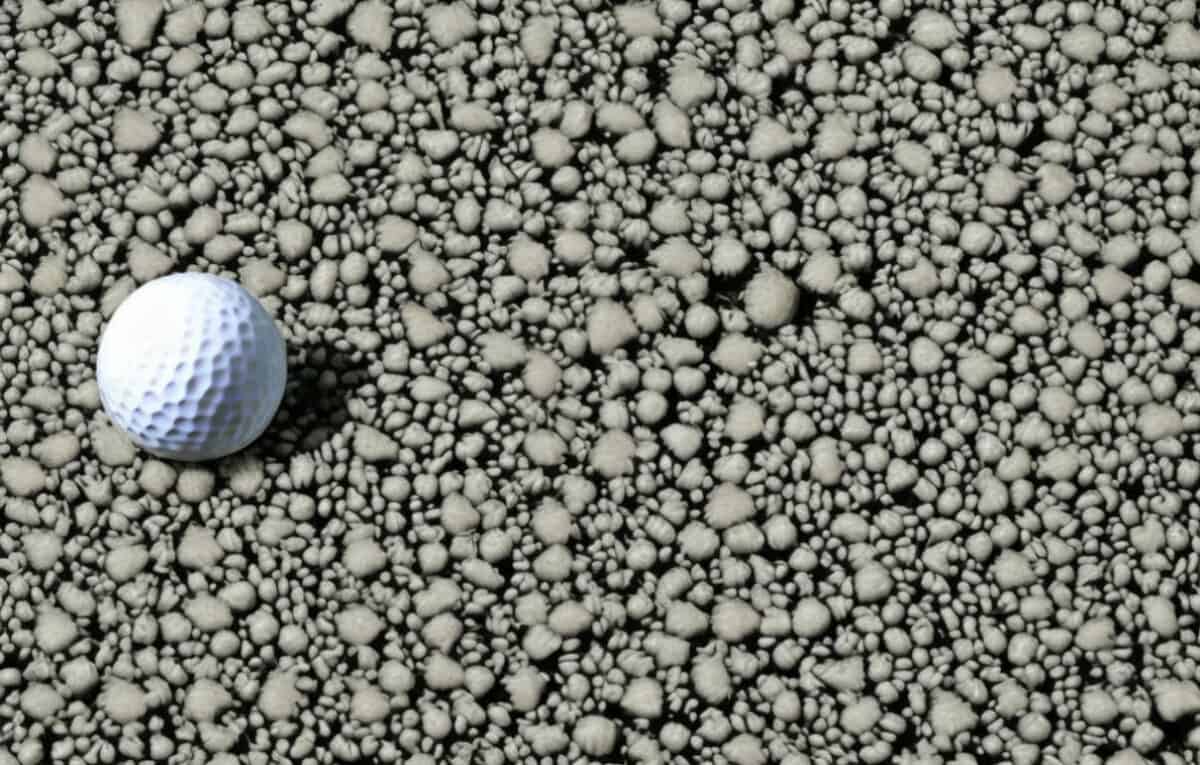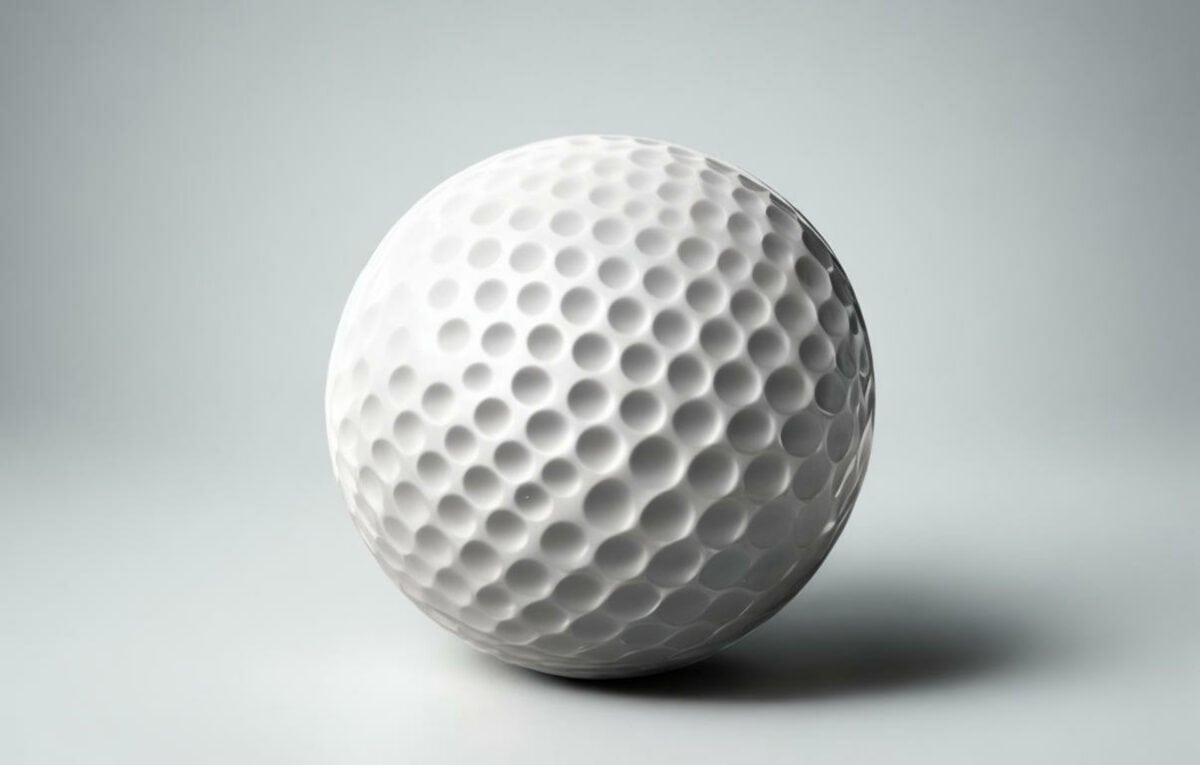What Makes Golf Balls Different From Each Other?
With so many golf ball options and models available today, it can be difficult to understand what really differentiates one from another under the covers.
While the balls may look fundamentally similar on the outside, intricate construction and design differences significantly impact performance.
In this guide, we’ll examine the key technical elements that create distinct performance profiles between various golf ball constructions.
We’ll look at differences in materials, layering, dimple patterns, and manufacturing processes. Understanding these unique engineering aspects provides the foundation for smart golf ball selection and maximizing your potential.

Materials Science Makes Golf Balls Unique
One of the biggest differences between golf ball models comes from specialized materials used in the core, cover, and mantle layers:
- Core: Can contain liquid, foam, or solid rubber materials to optimize energy transfer at impact. softer and faster-reacting cores promote more ball speed.
- Cover: Formulations like Surlyn, urethane, and specialty blends affect feel and spin. Materials interact differently with club grooves.
- Mantle: Composite substances like ionomers, graphene, and HNPs fine-tune spin, launch, and speed through precise energy flow manipulation between layers.
Through advanced chemistry, OEMs optimize launch and spin attributes.
Key Differences in Golf Ball Construction
The way golf ball layers get configured results in substantially different performances:
- 1-piece balls are the most basic with a solid core encased by a cover. Limited performance capabilities.
- 2-piece balls feature just a single solid core and cover layer. Favored by beginners for affordability.
- 3-piece balls add a third mantle layer permitting greater manipulation of spin and energy across the clubs. Improved feel and greenside spin over 2 pieces.
- 4-piece balls include four independent layers. Allows optimizing spin separation between driver, irons, and wedges. Soft urethane covers further enhance feel and control.
- 5-piece balls represent the most advanced designs. Adds a fifth mantle layer for independently tuning driver, iron, wedge, and putter performance. Best for elite player skill demands.
Construction layers have significant effects and trade-offs.
How Dimples Make Golf Balls Perform Differently
While regulated in minimum numbers by USGA rules, dimples represent another key differentiator:
- Dimple Depth – Deeper or shallower depressions affect lift and drag.
- Dimple Edges – Sharp versus rounded edges impact flow separation reducing drag.
- Dimple Layout– Patterns minimizing seam lines improve aerodynamic symmetry.
- Total Count – More dimples maintain lift longer.
- Size Variations – Strategic placement of different diameter dimples fine-tunes aerodynamics.
Dimple profiles tailored to ball constructions optimize flight characteristics.
Manufacturing Tolerances Matter
Extreme precision manufacturing separates quality balls from recreational models:
- Molding – Advanced tools and processes ensure core sphericality and surface smoothness to micro tolerances.
- Stamping – Multi-axis precision stamping positions intricate dimple patterns to tight specifications.
- Coatings – Thin urethane coats applied with stringent process controls optimize feel and spin.
- Curing – Heat and radiation treatments activate engineered compounds improving durability.
There are no shortcuts – precision costs. But the performance rewards justify the manufacturing rigor.
Core Hardness Explained
A key variable between models comes from core hardness which affects compression and energy:
- Softer cores compress more against the face to maximize energy transfer, resulting in faster ball speeds. But can reduce control.
- Firmer cores provide explosive response at impact well-suited to high swing speeds above 110 mph. Require precise impact for ideal performance.
- Graded cores use varying hardness through the core to manipulate launch angle, spin, and feel across clubs.
Discerning compression ratings matched to swing speeds unlock optimized distance and feel.

Why Ball Weights Vary
While regulated to a 1.620-ounce maximum, golf ball weights still vary slightly:
- Heavier balls deliver steadier, lower trajectories while lighter balls generate higher flight.
- Some players perceive heavier balls as better quality and more premium.
- Weight distribution balancing core and cover densities enhances spin characteristics.
- Adhering closely to the maximum legal limit ensures maximum speed potential.
Even minor weight differences of a few grams impact launch angle, spin rates, and penetration.
Specialty Coatings Enhance Performance
Supplemental exterior coatings also create performance differences:
- Urethane – Thin outer coat on some balls enhances feel. Allows tour-level greenside spin.
- Surlyn – Provides scuff protection and durability. Maintains ball speed longer.
- Thermoplastics – Materials like HNP grafted onto covers dial-in ball behaviors.
- Lubricants – Added to reduce friction drag for sustained velocities.
Complimentary layers maximize the strengths of primary materials in golf ball design.
Range vs Green Speed Aim Dual Uses
Another differentiating factor is some balls get engineered specifically for range day use:
- Matte Finish – Reduces glare aiding visibility when practicing ball flights.
- Penetrating Flight – Maximizes carry by reducing spin for tee usage.
- Durability – Withstands machine impacts and turf abrasion on practice ranges.
- Affordability – Low cost per ball forgives extreme volume usage.
Conversely, urethane-covered tour balls focus strictly on the greenside play.
Personal Customization Options
Finally, customization represents a new frontier differentiating balls:
- Monogramming – Adding initials, numbers, logos, or wording supports self-expression.
- Vivid Colors – Matte and gloss options in green, orange, pink, etc. allow flair.
- Photo Printing – Detailed images or artistic designs provide unique flair.
- Corporate Branding – Logos and graphics promote businesses.
While personalization doesn’t affect technical performance, it’s increasingly popular for individual customization.
Understanding these intricate engineering nuances helps identify optimal golf balls matched specifically to your game and preferences. Spend wisely on golf balls maximizing your enjoyment of the sport.
